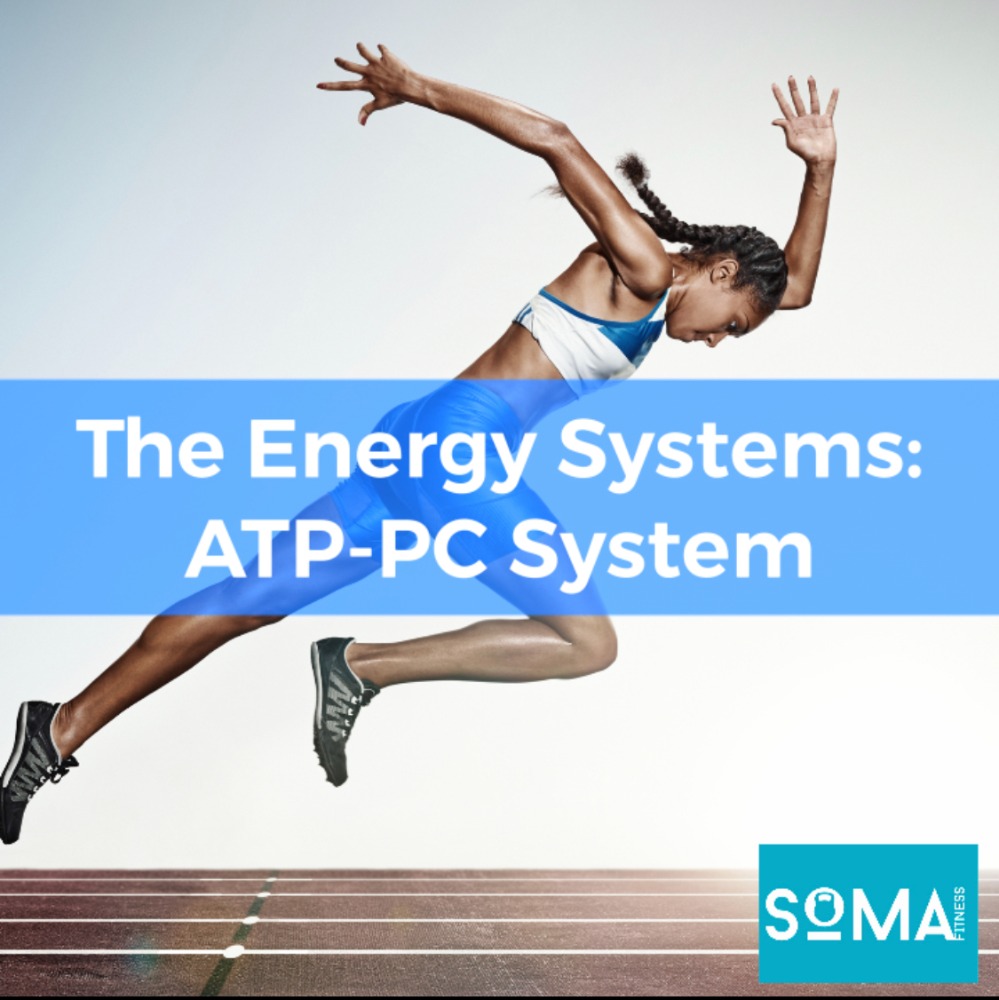The Energy Systems: ATP-PC System
 When we exercise, our bodies require energy to cause our muscles to contract, resulting in movement, cardiac muscle to contract more frequently and powerfully to increase blood flow and smooth muscle, such as the muscles in our respiratory system, to increase the amount of oxygen we take into our bodies. Energy can otherwise be called Adenosine Triphosphate (1 molecule of adenosine and three molecules of phosphate) or ATP for short. The body has 3 systems that it can create ATP from and, although we always use all 3 simultaneously, there will always be one system that is much more predominant than the others, based upon the activity and environment you’re in. This article will go more in-depth about the ATP-PC system or Alactic System and also how you can focus you’re training to improve its efficiency to further benefit your performance in the gym.
When we exercise, our bodies require energy to cause our muscles to contract, resulting in movement, cardiac muscle to contract more frequently and powerfully to increase blood flow and smooth muscle, such as the muscles in our respiratory system, to increase the amount of oxygen we take into our bodies. Energy can otherwise be called Adenosine Triphosphate (1 molecule of adenosine and three molecules of phosphate) or ATP for short. The body has 3 systems that it can create ATP from and, although we always use all 3 simultaneously, there will always be one system that is much more predominant than the others, based upon the activity and environment you’re in. This article will go more in-depth about the ATP-PC system or Alactic System and also how you can focus you’re training to improve its efficiency to further benefit your performance in the gym.
The ATP/PC system derives its name simply because it recycles the small storage of our bodies ATP and PC (Phosphocreatine) to produce ATP for exercise. Firstly, ATP is broken into ADP (Adenosine Diphosphate which is 1 Molecule of Adenosine and two molecules of phosphate). This action releases the energy required for our muscles to contract. Phosphocreatine is then broken down into creatine and a molecule of phosphate by an enzyme called creatine kinase. The energy released from this reaction is then used to join the phosphate group to ADP to create ATP which can then be broken down to create more energy for muscular contraction. Therefore, the limiting factor for this energy system is our body’s stores of phosphocreatine (or just creatine, which will be touched on later in the article.
As our bodies only have small stores of ATP and PC, this energy system can only be used for 10 seconds of exercise before we primarily use either to lactic acid energy system or the aerobic energy system, which will be looked at in the coming articles. However, despite its short duration, a huge positive of this energy system is that doesn’t produce performance debilitating by-products like lactic acid. Once used up, it takes approximately 3 minutes to replenish our body’s stores of ATP and PC, in order for the ATP/PC system to be the predominant system used in the next 10 second bout of exercise.
If we apply this to training in the gym, strength training, power training (less than 6 reps per set) and sprint training (10 second bouts or shorter) will primarily use this energy system. Therefore, if you are looking to improve on your strength, power and/or sprint performance, then it’s important to remember the principle of the 3-minute rest in order to be providing the stimulus to the ATP/PC system and therefore bring about the desired outcome of becoming stronger, faster or more powerful. Inadequate rest or prolonging the duration of repetitions will place stress onto the lactic acid energy system. The negative of doing so, is that this does not have the same benefit when it comes to all out efforts of 10 seconds or less, which is of particular concern for people partaking in sports where performance in these areas is key.
Although our stores of PC are very small, there is ways to increase them slightly. We can do this by supplementing our diet with creatine. This is because creatine has the ability to increase our muscle’s stores of PC and thereby prolonging the amount of time we can utilise the ATP/PC system before the lactic acid energy system becomes to primary energy system. The benefit to this is that you can place the training stimulus onto the ATP/PC system for an extra couple of reps/ few seconds per set which, over time, results in greater adaptations, and therefore performance, in strength and power.
Also, creatine is the most well researched supplement in the world and, unlike some supplements, it has been found to have no negative side effects. The recommended dosage for creatine is 5g per day which is relatively cheap as you can purchase 250g for approximately £15-£20. However, as it is a loading supplement, it is important to consume every day so that the quantity of creatine in the muscles can build up in order for you to see the benefits, unlike caffeine, whereby you take a dosage 1 hour prior to training and feel the effects for the next few hours.
I hope this has explained how you can improve the accuracy of your training and supplementation when you wish to focus on improving your strength, speed or power performance and overall bring about better results.

Leave a Comment
(0 Comments)